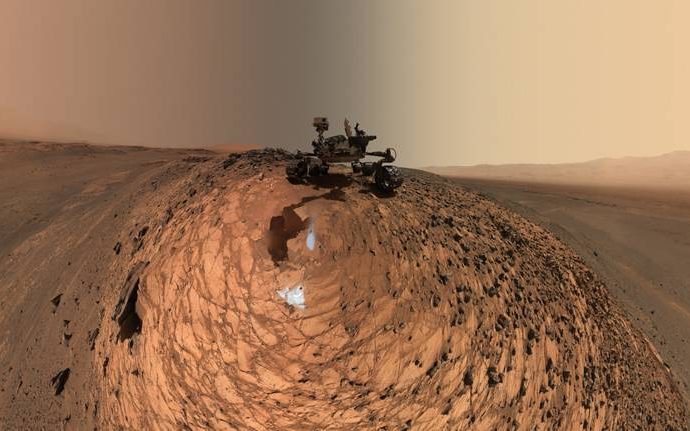Oxygen on Mars behaves in ways scientists can’t seem to explain yet, according to NASA.
Source: Global News
On its website this week, the space agency noted what they’ve learned from measuring “seasonal changes in the gases” above a crater on Mars.
“They noticed something baffling: oxygen, the gas many Earth creatures use to breathe, behaves in a way that so far scientists cannot explain through any known chemical processes,” the post said.
A portable chemistry lab inside the Curiosity rover analyzed the make-up of Martian air above the Gale Crater over the course of six Earth years (or three Martian years).
Scientists expected oxygen to behave predictably, but “it didn’t” — unlike nitrogen and argon, which followed a “predictable seasonal pattern.”
NASA associate administrator Thomas Zurbuchen said on Twitter the rover had “detected seasonal variations of oxygen on Mars that so far cannot be explained through any known chemical processes.”
Apparently, the level of oxygen rose by up to 30 per cent in the spring and summer — which they marked as “above prediction” in a chart on the NASA website.
These observations were published in an academic article this week in the Journal of Geophysical Research: Planets.
One of the co-authors — Sushil Atreya, a scientist at the University of Michigan — called it “just mind boggling” when the researchers first saw the measurements.
Another scientist who led the research, Melissa Trainer from Maryland, said in the NASA post that they’re “struggling to explain this.”
The scientists re-checked the accuracy of the measuring device they used, but it was “fine.”
They likened the oxygen mystery to the as-yet-unsolved puzzle of methane on Mars. Methane apparently increases by as much as 60 per cent in the summer, for reasons we don’t know.
Scientist Timothy McConnochie from the University of Maryland — also a co-author of the paper — told the BBC that the measurements indicate a possible “reservoir” of oxygen close to the surface.
Oxygen and methane can be the products of biological processes, but scientists said the rover doesn’t have a way of knowing whether the source of either gas is due to biology or geology.
They are leaning heavily towards “non-biological explanations,” according to NASA.
“Abiotic processes look very promising, so we’ll need to firmly rule them out first before pursuing microbial contribution,” Atreya told the BBC.
For now, the researchers are letting the world know about their observations and are asking Mars experts in the scientific community for any and all ideas.
Source: Global News

































Leave a Comment
You must be logged in to post a comment.